Documentary : Traditional Culture
![]()
Prominent Artisans of Kyoto Techniques and Artistic Spirits
DC272036![]()
京職人手帖第7話 京職人 ~受け継がれる技と想い~ [KBS]
![]()
![]()
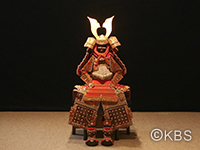
|Length : 20min |Year : 2020 |
Kyoto was the Imperial capital of Japan for over 1000 years until the mid-19th century. Most of Japan’s great traditions and culture grew and were nurtured in Kyoto by dedicated artisans. This program introduces some of the finest crafts people who have perfected their techniques and artistic spirits over many years.
KYOTO KACCHU or decorative armor is exhibited during the Boys’ Festival in May. It exudes a graceful character in its valiancy. Saji Takeo is a craftsman of Kyoto Armor and produces various pieces including helmets, armguards, and leg guards and assembles all the pieces to make finished products by hand.
Kyoto Knot-tassels were used as decorations for furnishings in the 9th century. And in the 17th century, knot-tassels were used for Buddhist altar fittings as well as monks’ Buddhist stoles. Kagitani Kyozo is a craftsman making Kyoto Knot-tassels. He knots and combines various types of traditional knots to make decorative knot-tassels.
Arita Ware Reborn ~Beyond the Tradition of 400years~
DC271736![]()
伝統か 革新か ~有田焼400年 再び世界へ~ [KBC]
![]()
![]()
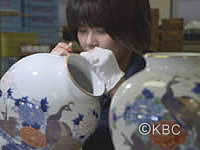
|Length : 25 |Year : 2017 |
Arita-yaki porcelain wares have been in production for 400 years. They were treasured items dubbed “White Gold” by the royals and nobility of 17th century Europe, but their popularity has waned in recent years.
In an effort to send Arita ware forth into the world again, a grand project was planned. This project was to create never before seen, unique porcelain ware. The potters of Arita chose as the site of the unveiling, the city of Milan, Italy. How would the world respond?
Should they preserve traditions, or go for innovation? This program follows the year and a half of struggles the potters have gone through to resurrect the Arita porcelain ware industry.
Why Live in Japan!? KANJI “Japanese Characters” is my Pleasure of Life
DC271637![]()
ワタシが日本に住む理由 日本人に漢字を教える漢字教育士ブレット・メイヤー
![]()
![]()
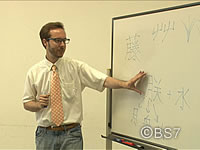
|Length : 43min |Year : 2016 |
Brett Mayer, from New Jersey, USA. He successfully passed the Level 1 of the Kanji Aptitude test, and became the first American. He memorized more than 6000 Kanji. Brett, who is always thinking of Kanji, loves rare Kanjis on the streets! Brett is also able to explain clearly how Kanji was made. Tourist visiting Japan goes on increasing year after year. Then who knows the splendor of Japan most? It must be a foreigner who decided to live in Japan for life. "Why do you live in Japan?"We will find the reason why Brett lives in Japan.
Preserving the Future~The Challenges of Restoring a National Treasure~
DC271636![]()
よみがえる国宝 瑞厳寺~平成の大修理 100年先に繋ぐ匠の技~ [KHB]
![]()
![]()
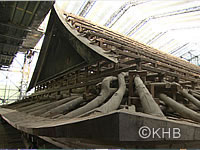
|Length : 50min |Year : 2016 |
Majestic Zuigan-ji Temple in the northeast Japan is a national cultural treasure. Completed 400 years ago by the feudal lord of the region, Date Masamune, it’s famous as a lavish and glorious example of the culture of the Azuchi-Momoyama period. With ground subsidence now causing its pillars to tilt, Zuigan-ji has been undergoing comprehensive repairs and restorations since 2009, called "the great Heisei restoration." An essential consideration in the repair of Japanese cultural properties is that old and weathered parts must not be replaced and existing original materials must be reused to the greatest possible extent. The restoration's greatest hurdle was to reinforce the structure against earthquakes.
Trace of the History of Ise Gran-Shrine: Treasures of the Land of the Rising Sun
DC271535![]()
時を紡いで~美し国の宝~ [MTV]
![]()
![]()
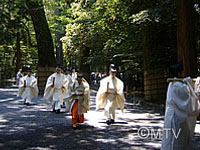
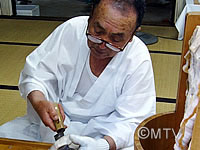
|Length : 46min |Year : 2015 |
Ise Gran-Shrine in Ise City, Mie prefecture, is thought to be the spiritual home for Japanese, and has been the center of Shinto for more than 1000 years. In 2010, more than 8.6 million people including the young and foreigners visited the shrine, which is the highest number in a century.
Shikinen Sengu is the most important ritual, which is held once every 20 years. It involves the reconstruction of the buildings, as well as renewal of the sacred apparel and the treasures carried to the new sanctuary. Sacred apparel and treasures associated with the deities are offered to the shrine at Sengu held every 20 years from 1300 years ago.
Moreover, local residents who live on the land that once belonged to the shrine have kept working for the shrine by making salt or weaving. This program also introduces the local people’s sincere minds for facing God.















